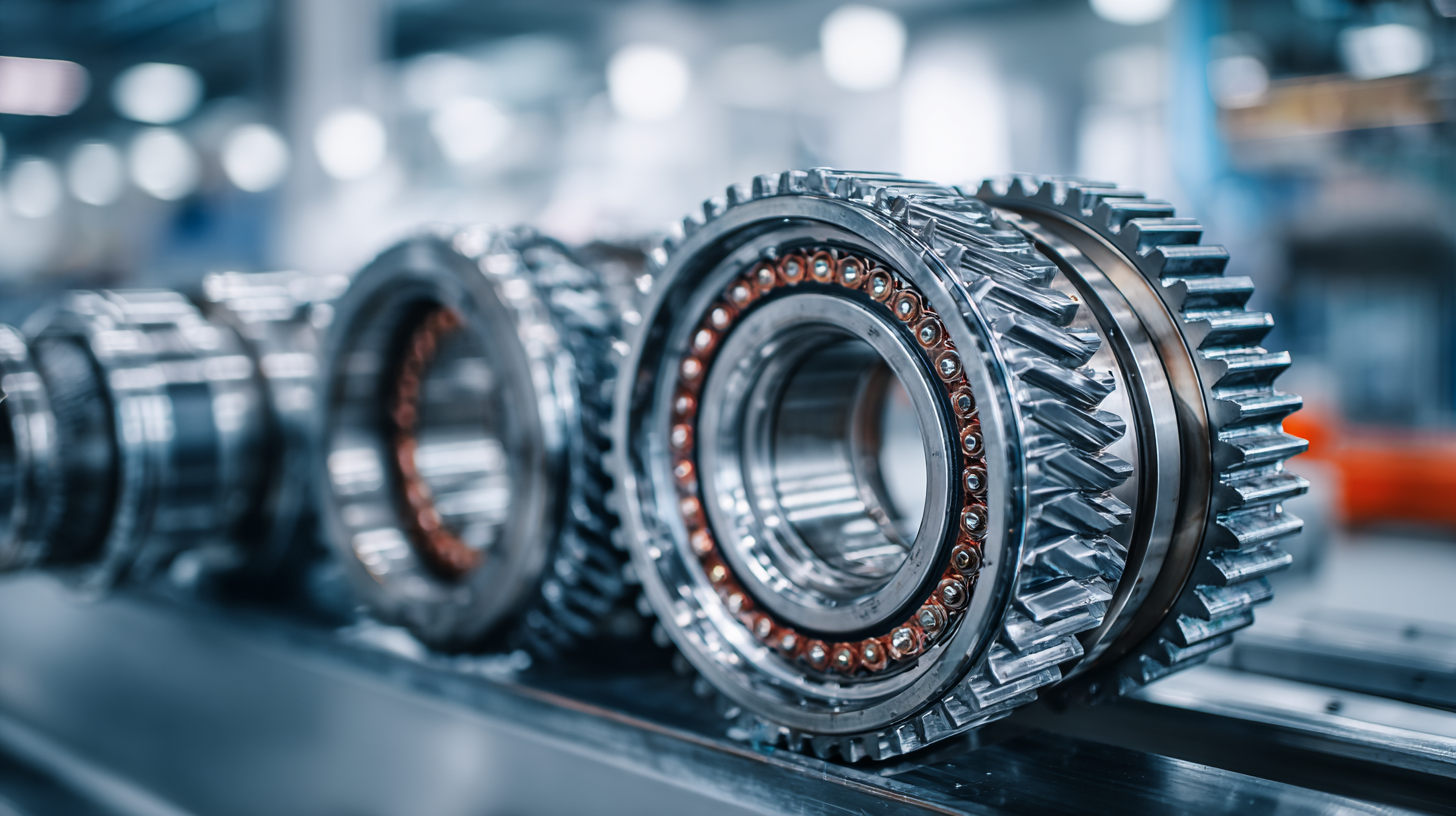Maximizing Value: How Quality After-Sales Service Reduces Repair Costs for Best Thin Section Bearings
In the competitive landscape of modern manufacturing, the importance of after-sales service cannot be overstated, particularly in the context of thin section bearings. A report by MarketsandMarkets highlights that the global bearing market is expected to reach $97.6 billion by 2025, with thin section bearings playing a crucial role due to their lightweight, high-strength characteristics and ability to minimize friction in machinery. However, many companies still underestimate the financial implications of quality after-sales service, which can significantly reduce repair and maintenance costs. Studies indicate that effective after-sales support can lower total lifecycle costs by as much as 25%. This emphasizes the need for manufacturers to not only focus on producing high-quality thin section bearings but also to cultivate robust after-sales service strategies, reinforcing their commitment to “精工细造,中国制造,服务世界” and enhancing overall customer satisfaction.

Understanding the Importance of After-Sales Service in Thin Section Bearings
After-sales service plays a crucial role in the performance and longevity of thin section bearings. These components are essential in various applications, from aerospace to automotive industries, where even minor failures can lead to significant operational disruptions and high repair costs. A robust after-sales service framework ensures that customers receive the necessary support and guidance throughout the lifespan of their bearings, which can dramatically reduce the incidence of failures through timely maintenance and insights into optimal usage conditions.

For instance, understanding the temperature differentials between bearings and external environments is vital. Regular monitoring and expert advice from after-sales teams can prevent overheating and extend bearing life. Additionally, when a failure does occur, having a reliable service provider can streamline the repair process, minimizing downtime and associated costs. As seen in recent studies, effective after-sales strategies not only enhance customer satisfaction but also lead to economies of scale, allowing companies to pass on those savings to clients while ensuring high-quality service.
The Financial Impact of High-Quality Bearings on Long-Term Repair Costs
High-quality bearings play a critical role in reducing long-term repair costs for any machinery. When manufacturers opt for premium thin section bearings, they invest not just in performance but also in reliability. These top-tier components are designed to withstand demanding conditions and minimize wear and tear, resulting in fewer breakdowns and a lower frequency of repairs over time. By reducing the need for replacements and maintenance, businesses can significantly decrease operational disruptions and associated costs.
Furthermore, the financial implications of utilizing quality bearings extend beyond immediate repair savings. Enhanced durability translates into longer service life, thus elevating the overall value of machinery investments. Companies can allocate resources that might have gone to managing repairs toward innovation and growth initiatives. This creates a positive feedback loop where investing in quality components leads to improved efficiency, reduced downtime, and ultimately, greater profitability. The choice of bearings, therefore, has lasting consequences that can impact a company’s bottom line significantly.
Evaluating Manufacturers: Key Criteria for Choosing Quality Bearings
When evaluating manufacturers for quality thin section bearings, several key criteria play a vital role in ensuring optimal performance and reliability. First and foremost, it’s essential to consider the manufacturer’s reputation and experience in the industry. A long-standing presence often indicates a proven track record of quality and customer satisfaction. Researching user reviews and case studies can provide invaluable insights into the manufacturer’s reliability and the performance of their bearings in real-world applications.
Additionally, the materials and production processes used in bearing manufacturing significantly impact their quality. High-grade materials, precise engineering, and advanced manufacturing techniques contribute to the durability and efficiency of the bearings. Look for manufacturers who utilize rigorous quality control measures and adhere to international standards, such as ISO certification. This not only confirms the quality of the bearings but also reflects the manufacturer's commitment to excellence and innovation in their offerings.
Finally, a responsive and knowledgeable customer service team is crucial. A manufacturer that provides excellent after-sales support can help address any concerns promptly, reducing downtime and associated repair costs. By choosing manufacturers who prioritize quality and customer service, businesses can maximize the value of their investment in thin section bearings and ensure their long-term operational success.
Statistical Insights: How Effective Support Reduces Total Cost of Ownership
When it comes to thin section bearings, the importance of effective after-sales support cannot be overstated. Quality service not only ensures optimal performance but also significantly reduces the total cost of ownership. Statistical insights reveal that businesses that prioritize strong after-sales support enjoy lower repair costs and prolonged product life. This means that investing in quality service is not just about addressing issues as they arise; it's a proactive approach that yields substantial savings over time.
Tip #1: Develop a relationship with your suppliers. Establishing a direct line of communication ensures that you receive timely advice and support, ultimately reducing downtime and repair expenses. Frequent check-ins can highlight potential issues before they escalate, saving costs and maintaining productivity.
Tip #2: Implement regular maintenance schedules. Routine checks and services can prevent minor problems from becoming major failures, further minimizing repair costs. A well-maintained bearing is less likely to fail, ensuring that your operational costs remain low and efficiency stays high. By valuing after-sales service and maintenance, businesses can maximize the value derived from their thin section bearings.
Best Practices for Maintenance and Support to Maximize Bearing Lifespan
Effective maintenance and support are vital for maximizing the lifespan of thin section bearings, especially in high-performance applications. According to a report by the International Bearing Association, proper maintenance can extend the life of these bearings by 30% or more. Regular monitoring of operational parameters and implementing a proactive maintenance schedule significantly reduce unexpected failures. Data shows that a well-structured maintenance strategy can decrease repair costs by up to 25%, underscoring the financial benefits of investing in quality after-sales service.
Incorporating best practices like condition monitoring and predictive maintenance can identify potential issues before they escalate. A study published in the Journal of Mechanical Engineering highlighted that using advanced sensors to monitor vibrations and temperature changes can lead to earlier detection of bearing wear, potentially avoiding costly downtime. Additionally, training maintenance personnel on the unique needs of thin section bearings ensures that the right procedures are followed, further maximizing their operational efficiency and lifespan. By prioritizing these aspects, companies can not only enhance their bearing performance but also significantly reduce long-term repair costs.